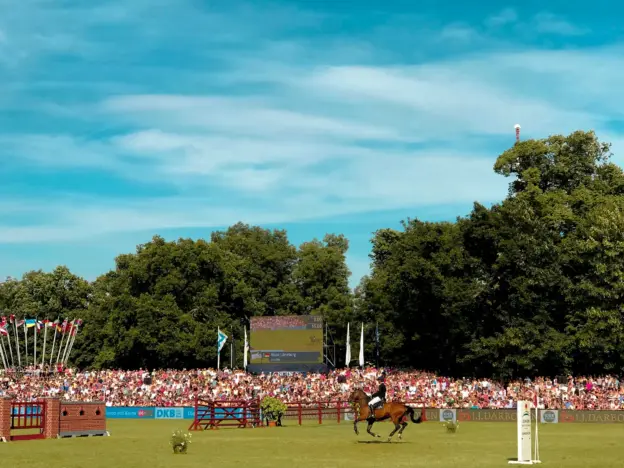Intro
Known worldwide for the symbolic “H” branded into their hindquarters, the Hanoverian is one of the most well-loved and wide-spread of the European warmbloods. These horses have made a name for themselves in the Grand Prix competitions.
Origins
The Hanoverian was established in Celle, Germany in 1735 by George II, King of England (1727-1760). Now bred extensively in North and South America and Australia. Hanoverians were initially refined with Thoroughbred blood, giving their movement more freedom and lightness. The ideal result was a horse swift and strong enough for competitions, while remaining tough enough for general work.
By the end of the 18th century there were detailed logs of bloodlines which were carefully monitored. During the Napoleonic Wars, much of the Celle stock was depleted. However it picked up again after 1816 and earned a stronger Thoroughbred influence, making the resulting stock too light for real agricultural use. So attempts were made to thicken the stock back up again.
By 1924 breeding spread to Osnabruck-Eversburg where after the second world war Trakehners made their way into the Hanoverain bloodline helping to further refine a solid sport horse.
Features
Average height 15.3-16.2 hands
Athletic and strong
Athletic and elastic action
Even tempered
Physique
Powerful body and hindquarters
Solid conformation
Light medium sized head
Short legs with large pronounced joints, strongly muscled forearms
Hard, well-shaped hooves
Broad, medium-length back with powerful loins
High-set tail, strong hindquarters
Traditional Colors:
Solid colors
Temperament
Intelligent
Courageous
Versatile
Sound, even temper
Use
Competition horse
Show horse
Helpful Links
*All links open in a new window
Verband Hannoverscher Warmblutzüchter e.V.
British Hanoverian Society
American Hanoverian Society Foundation
Hannoverian Horse Society of Australia
Royal Hanoverian Creams
